At some point in our lives, we have all been taught to behave in emergency situations. However, it is not so easy to remember these things when we really are in extreme circumstances.
That’s why Crfat Sides prepared this information that explains how to act in an emergency. Always remember: knowing what to do in the face of a threat can mean the difference between life and death.
What Can One Do In Any Emergency Situation?
1. How to Survive If You Get Caught In A Strong Current
In The River

In The Sea
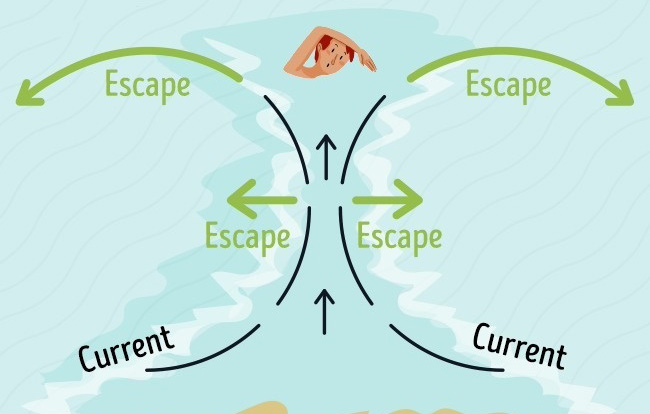
2. In Case Of Fire
What to do:
Stay low to the floor, and exit the building as quickly as possible.
What not to do:
- Do not use water to extinguish a fire in electrical equipment.
- Do not open any windows, and don’t hide inside the building.
3. Saving Yourself If You’re Choking
Method #1
Place your fist below your rib cage and above your navel, and drive it in and up in a heavy quick motion.
Method #2
Lean over a chair, and press your abdomen • against the back of it.
Method #3
- Lie down on the floor in a push-up position, push your arms apart, and take a quick inhale.
- Lift your head, and allow your chest to hit the floor.
What not to do:
Don’t speak. Don’t drink. Don’t inhale deeply.
4. How To Stop Bleeding
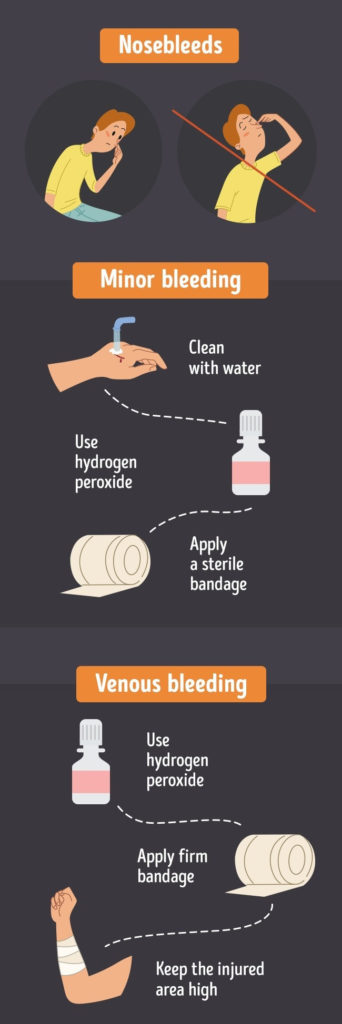
Severe bleeding
- Place a sterile bandage on the wound. Press the bandage firmly with your palm.
- Call for emergency medical assistance.
Arterial bleeding
- Apply a firm bandage.
- Apply pressure to the wound.
- Bend the affected leg or arm.
- Use direct pressure on an artery.
- Call for emergency medical assistance immediately.
Note: Apply tourniquet only as a last resort if the bleeding will not stop. Leave a note indicating the time of the tourniquet application. Leave tourniquet on for no longer than one hour in summer and 30 minutes in winter.
5. When You’re Dehydrated
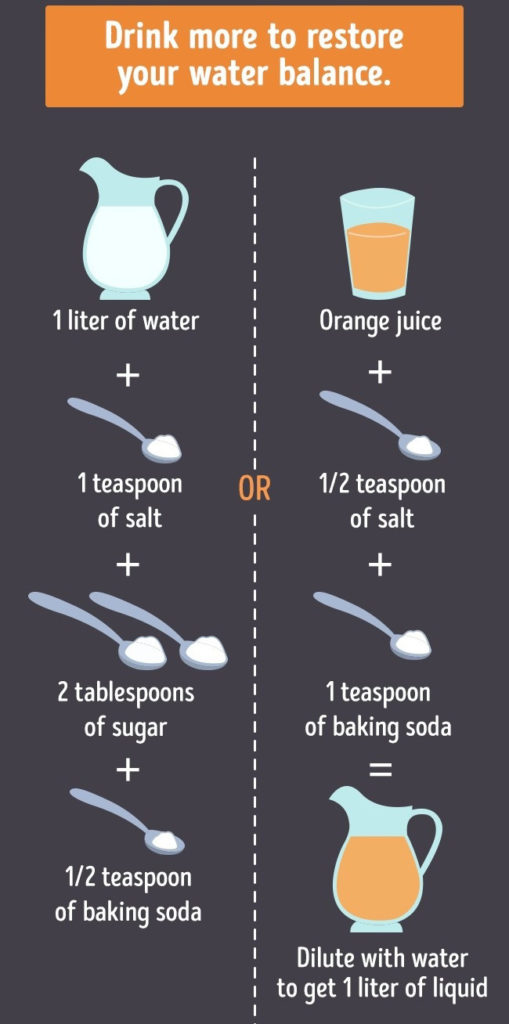
6. In Case Of Hypothermia
What to do:
Cover the victim with warm blankets. Give them a hot drink.
What not to do:
- Don’t rub the victim’s arms or legs.
- Don’t put them into a hot tub.
- Don’t give them alcohol to drink.
7. If You Get Lost In The Woods
Using a wristwatch to determine direction:
Hold an analog watch horizontally in your hand. Bisect the angle between the one o’clock mark and the hour hand. The center of this angle is the north-south line.
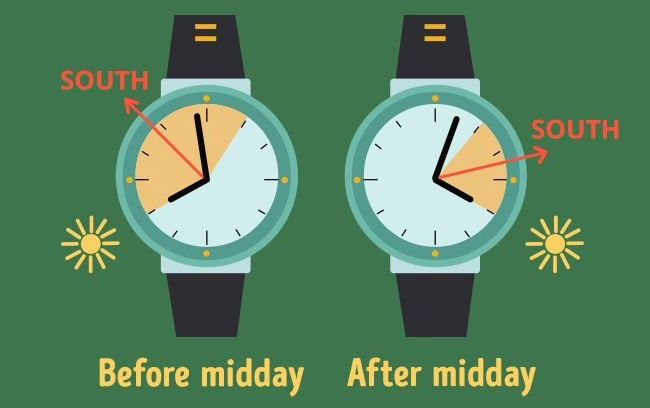
Note: Before heading out into the forest, pick out objects on a map to orient yourself (overhead power lines, roads, railways, etc.), and determine the direction of movement toward them.
8. How To Find Water In The Wild
Method #1
Plastic bag + string
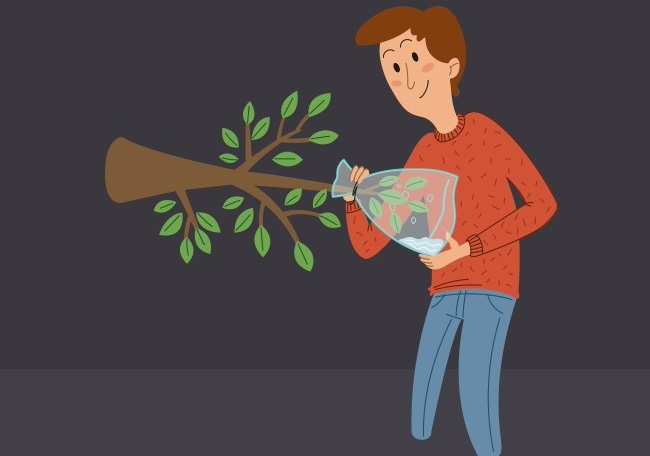
Method #2
A pit in the ground + plastic sheet + empty container for collecting water
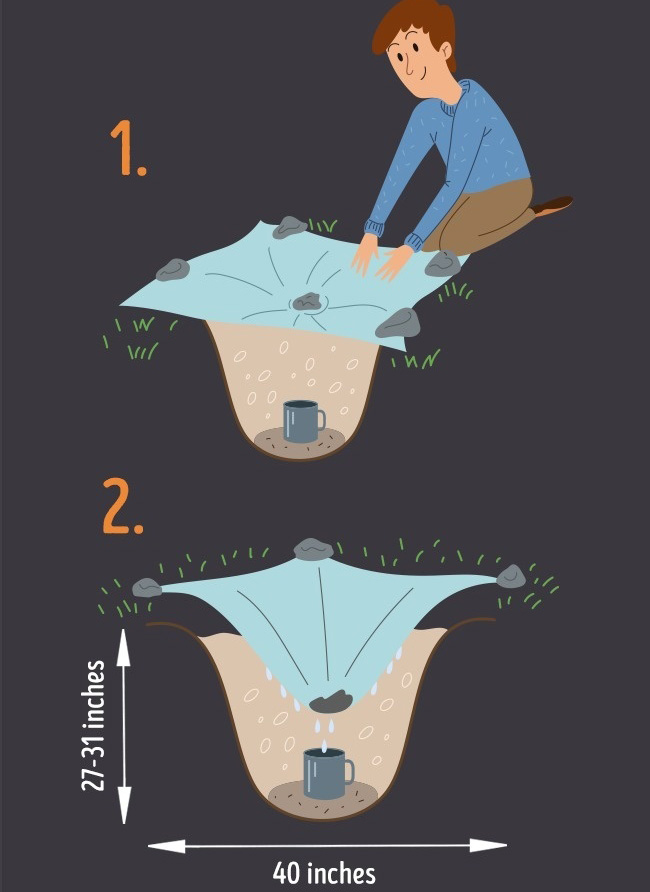
Note: BOILING WATER BEFORE DRINKING IS NECESSARY.
9. Avoiding The Risks Of Deadly Lightning Strikes
What to do:
- Crouch in a low-lying ditch.
- Shelter near a tree but avoid isolated ones.
What to Avoid:
- Don’t use your phone.
- Stay away from power lines.
- Avoid bodies of water.
10. Treating Minor Burns
Take off any jewelry or tight clothing near the burn before swelling starts.
Thermal burns
- 10-15 minutes
- Cover the wound with a sterile bandage or a clean cloth.
Acid burns
- 10-15 minutes
- Use neutralizing solution (soap/baking soda + water).
- Loosely apply a sterile bandage or clean cloth.
Alkaline Burns
- Remove the remains of the substance.
- 10-15 minutes
- Use neutralizing solution (soap/baking soda + water).
- Loosely apply a sterile bandage or clean cloth
11. First Aid To A Fainting Victim
Come closer to the victim, choose someone from the crowd, and ask them to call for emergency medical assistance.
What not to do:
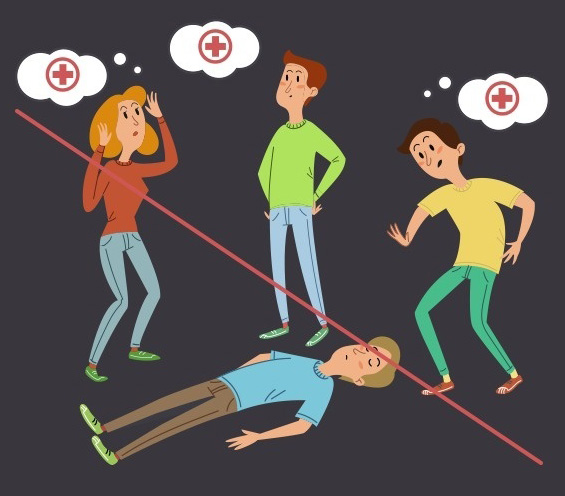




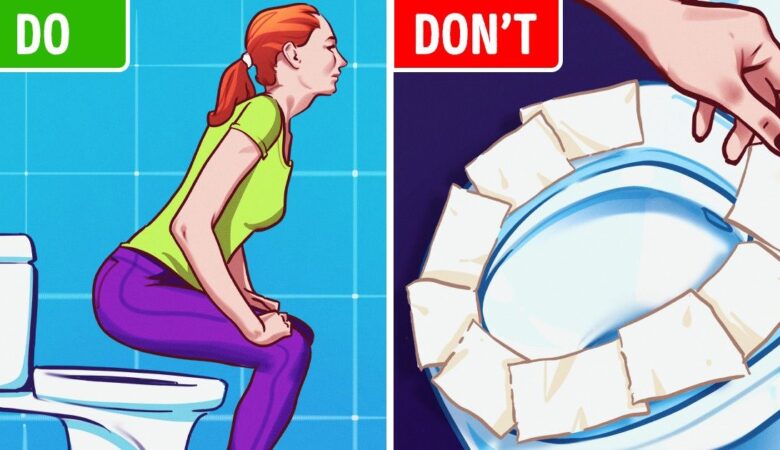



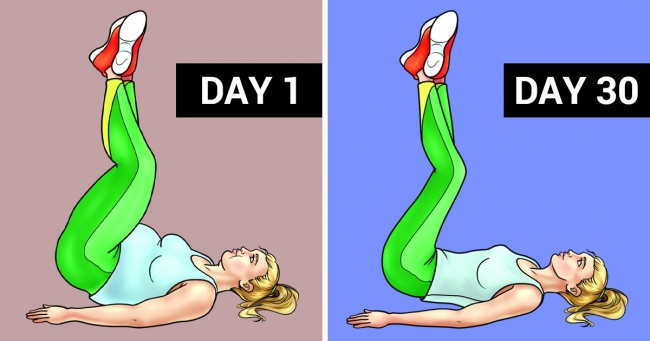
Leave a Reply